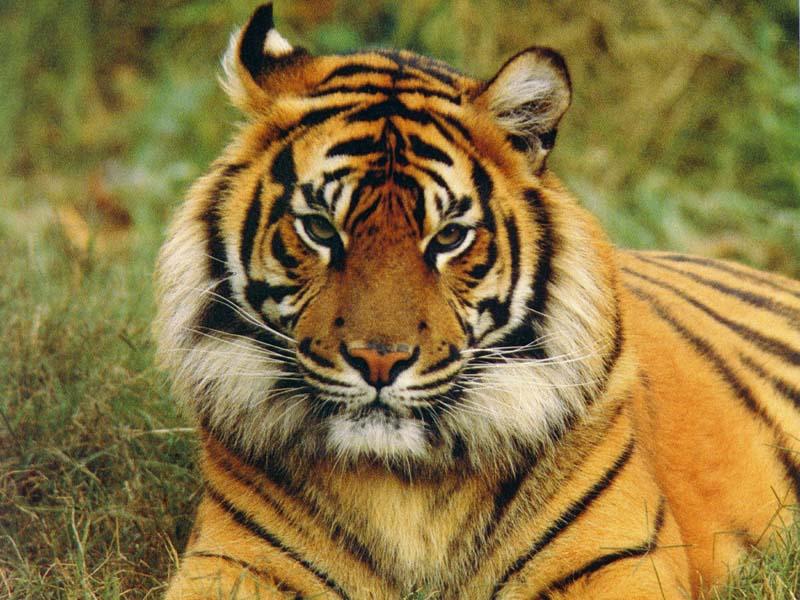Call to close tiger farms disputed
Responding to international calls to shut tiger farms in China, a forestry official said a drop in the wild tiger population is not related to the farms.
Yin Hong, deputy director of the State Forestry Administration, made the remarks on Friday, although some tiger farms in China have been caught illegally selling tiger products for medical or decorative uses from time to time.
 |
| File photo: Siberian tiger |
China is still among several countries, including Thailand, where tiger farms are legal, though a domestic trade ban on tiger products was issued in 1993. Now the country has 12 farms breeding more than 6,500 tigers.
"The fast disappearing natural habitat and cross-border illegal trade are major causes (for shrinking wild tiger numbers), rather than the farms," said Yin, who is also a Chinese People's Political Consultative Conference (CPPCC) National Committee member.
The farms were formed earlier than the ban, which makes the tigers the farm owners' private belongings, she said.
Confirming the existence of illegal trading tiger products such as bones in China, she said that her administration has limited power in regulating the tiger farms.
"We need further cooperation from the local industry and business bureaus," she said.
At least 11 Siberian tigers have starved to death in the past three months at a northeastern wildlife zoo that was closed for disciplinary reform after a violent tiger assault last year, the China News Agency reported on Friday.
Industry insiders said the care and feeding of the tigers are expensive. At the same time, the owners will profit from the tigers' deaths, keeping the animals' bodies in the freezer for eventual trade in the black market.
"Tiger farming somewhat stimulates illegal trade and consumption," said Xu Hongfa, director of the World Wild Life's China program.
Tiger parts, particularly the bones, are illegally traded worldwide, he said.
Many international animal protection advocacy groups blame traditional Chinese medicine (TCM) for the decrease in the tiger population in the wild, which now stands at 3,200 worldwide.
Tiger bones are used to treat arthritis and other joint ailments in TCM, which utilizes approximately 1,000 plant and 36 animal species, including rhinoceros, black bear, and musk deer.
"That's a misunderstanding as TCM has abandoned the use of endangered species parts like tiger bones since 1993," said Huang Jianyin, deputy secretary-general with the World Federation of Chinese Medicine Society, a non governmental organization based in Beijing.
The society issued a public call on Friday afternoon, asking TCM practitioners at home and abroad to stop using any endangered species, plants and animals alike.
"Without tiger bones, arthritis can still be treated by other TCM remedies," said Professor Li Feng with the Beijing University of Chinese Medicine. "Besides promising substitutes, like the bone of the wild mole rat, have been used already."
Some, however, thought otherwise.
Yao Naili, a TCM expert, and also a CPPCC member, said that in TCM, tiger bones have proven efficacy, so it might be OK to trade tiger parts from naturally deceased tigers on the farms for medical use.
"But it has to be operated under stringent regulation and supervision," he said.
Internationally, some echoed the idea of easing the trade ban on farmed tigers who die naturally.
In response, Xu argued that doing this would actually encourage the demand in tiger products and would definitely bring wild tigers closer to extinction.
"It would also undermine the country's constant efforts in saving the endangered species," Yin said.
Last December, the State Forestry Administration carried out a new crackdown on the illegal trade of tiger parts. A fund was established in 2008 by the central government to compensate farmers' economic losses caused by the endangered animals including tigers.
 0
0 







Go to Forum >>0 Comments